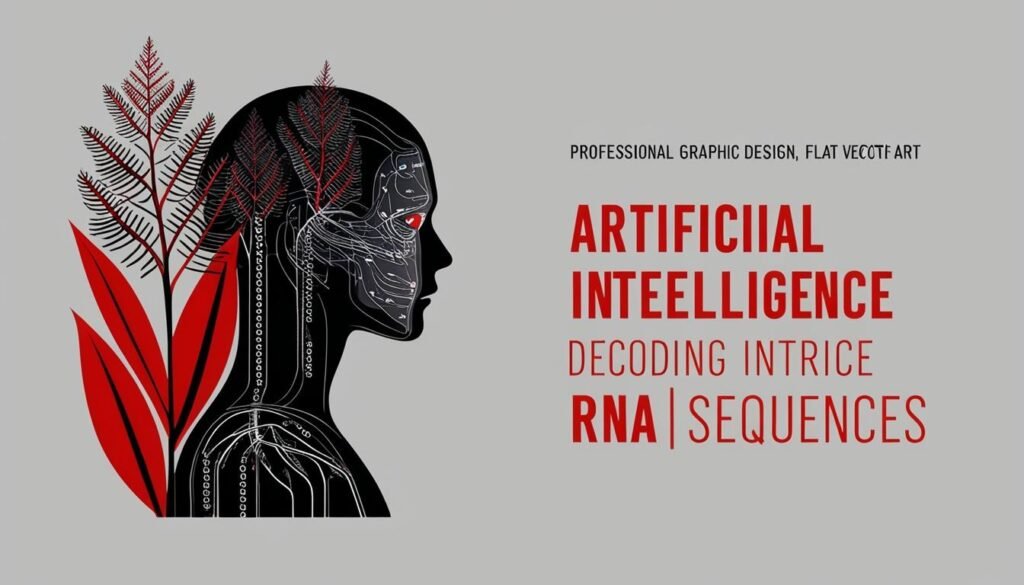Researchers have created Plant RNA-FM, an AI model capable of interpreting the complex RNA sequences in plants, promising advancements in agricultural practices and genetic understanding.
Researchers have developed an innovative artificial intelligence model, known as Plant RNA-FM, which is designed to interpret the genetic “language” of plants. This groundbreaking model, the first of its kind, has been developed through extensive collaboration among scientists from England’s John Innes Centre, the University of Exeter, and Chinese institutions including Northeast Normal University and the Chinese Academy of Sciences, with findings published in the journal Nature Machine Intelligence.
The Plant RNA-FM model was meticulously trained using an extensive data set comprising 54 billion RNA sequences derived from 1,124 plant species from around the globe. RNA, or ribonucleic acid, plays a crucial role in cellular communication and growth regulation within plants, as it holds similarities to DNA and is paramount in conveying genetic instructions for protein synthesis.
Dr. Haopeng Yu, a postdoctoral researcher at the John Innes Centre and co-author of the research, remarked, “While RNA sequences may appear random to the human eye, our AI model has learned to decode the hidden patterns within them.” This statement underscores the model’s ability to decipher complex RNA structures that play pivotal roles in plant growth and responses to environmental stressors.
The model has successfully made predictions regarding RNA functionalities and has identified distinct structural patterns that act as a “key language” in RNA molecules. These patterns enable RNAs to fold into intricate configurations, influencing the process of genetic translation—where RNA is utilised to create proteins, which are essential for nearly all cellular activities.
Through rigorous experimental validation, the predictions made by Plant RNA-FM concerning RNA structures have been confirmed, demonstrating that these structures significantly enhance the efficiency of translating genetic information into proteins. The implications of this breakthrough extend beyond plant science, with potential applications in the study of invertebrates and bacteria, establishing a broader framework for biological research.
Professor Yiliang Ding, who leads the research group at the John Innes Centre, articulated the transformative possibilities presented by this AI model, stating, “This breakthrough opens new possibilities for understanding and potentially programming plants which could have profound implications for crop improvement and the next generation of AI-based gene design.” He further highlighted the increasing role of AI in aiding scientists to address critical issues, such as feeding a growing global population and developing crops that can withstand the challenges posed by a changing climate.
The advancements showcased by Plant RNA-FM illustrate a significant step in the intersection of artificial intelligence and plant sciences, highlighting its potential to revolutionise agricultural practices and genetic research.
Source: Noah Wire Services
- https://phys.org/news/2024-12-ai-rna-language-life.html – Corroborates the development of the PlantRNA-FM model, its training on RNA sequences from 1,124 plant species, and its ability to decode hidden patterns in RNA sequences.
- https://www.biorxiv.org/content/10.1101/2024.06.24.600509v2.full – Details the pre-training of PlantRNA-FM on an extensive dataset of RNA sequences and structures, and its superior performance in plant-specific downstream tasks.
- https://www.biorxiv.org/content/10.1101/2024.06.24.600509v1 – Provides information on the model’s ability to identify functional RNA sequence and structure motifs, and its impact on translation efficiency predictions.
- https://phys.org/news/2024-12-ai-rna-language-life.html – Quotes Dr. Haopeng Yu on the model’s ability to decode hidden patterns in RNA sequences and its implications for plant growth and stress responses.
- https://www.biorxiv.org/content/10.1101/2024.06.24.600509v2.full – Explains how the model identifies distinct structural patterns in RNA molecules and their role in genetic translation.
- https://phys.org/news/2024-12-ai-rna-language-life.html – Describes the experimental validation of the model’s predictions regarding RNA structures and their impact on protein synthesis efficiency.
- https://www.biorxiv.org/content/10.1101/2024.06.24.600509v1 – Highlights the broader implications of the model for biological research, including potential applications in the study of invertebrates and bacteria.
- https://phys.org/news/2024-12-ai-rna-language-life.html – Quotes Professor Yiliang Ding on the transformative possibilities of the model for crop improvement and AI-based gene design.
- https://www.biorxiv.org/content/10.1101/2024.06.24.600509v2.full – Discusses the role of AI in addressing critical issues such as feeding a growing global population and developing climate-resilient crops.
- https://phys.org/news/2024-12-ai-rna-language-life.html – Describes the collaboration among scientists from the John Innes Centre, the University of Exeter, and Chinese institutions, and the publication in Nature Machine Intelligence.
- https://www.biorxiv.org/content/10.1101/2024.06.24.600509v1 – Details the significance of the model in the intersection of artificial intelligence and plant sciences, and its potential to revolutionize agricultural practices and genetic research.


